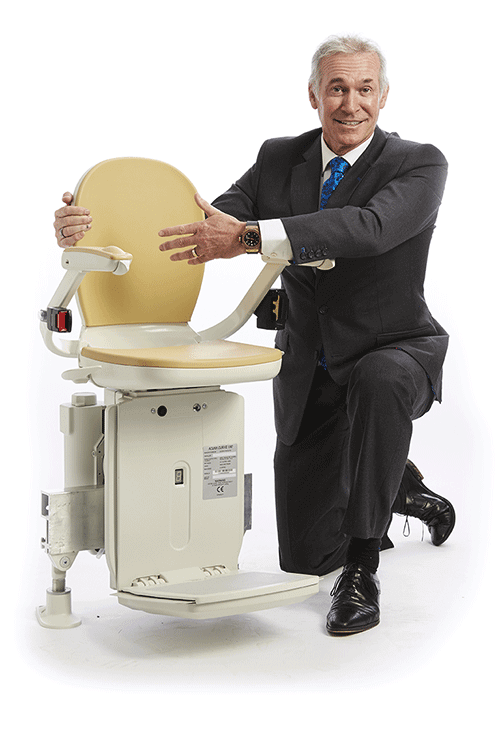Technology can trip up even the most experienced users, so it can be especially confusing and frustrating for generations that didn’t grow up texting, downloading apps, or scrolling through social media.
Read on to learn 7 tips for teaching seniors about technology and how to use it, transforming them from technologically troubled to “techspert.”
7 Teaching Tips to Transform Seniors from Students to Tech-Savvy
1. Set Seniors Up for Success—Decide Which Devices Are Best Designed for Their Needs
Before you even begin to try to teach someone something, you must make sure that your student is set up for success from the start. Do they have the materials and resources that are best for their own needs in order to achieve their goals?
While it may seem simple to set up a senior for success with technology, it is not as obvious as placing the newest model of the iPhone in the palm of their hand. There are actually many factors to take into consideration when selecting the best-suited technological devices for their personal needs.
For example, devices come in several brands, shapes, forms, and sizes and are sometimes even used in different ways, from touch screen to voice command.
Does your mom need a larger screen because she has trouble reading small fonts? Does your device need a voice control option for your uncle who has arthritis and can’t easily move his fingers? Is the device intuitive and easy to navigate for novices, or is it complicated and confusing, even for experts?
These are all questions to take into consideration. Remember that setting seniors up for success with technology is a personal experience, not one-size-fits-all.
2. Pick Up Your Pen and Paper—Tell Them to Take Thorough Notes
There is a reason why for centuries, people have continued to put pen to paper when learning something new.
Scientifically, the consciousness that you experience when actively handwriting new concepts onto paper allows you to better remember, retain, process, and understand the information that you are learning.
If possible, encourage the senior citizen to take thorough notes while you teach them. This not only reinforces retainment of the concepts that you are teaching them, but it also allows them to look back on their notes whenever they need help or forget how to do something.
If the senior learning about technology to is unable to write due to arthritis, Parkinson’s Disease, Essential Tremor Disorder, etc., make sure to provide them with a physical copy of the content that you taught that day.
Remember to include the most important points so that they can refer back to these notes when needed while navigating the internet, even when you are not present to help them.
3. Start with Safety—Security and Scammers for Seniors
Remember it is always better to be safe than sorry. With seniors being one of the most targeted demographics among scammers, it is crucial that you start with safety first.
Teach them tips for creating an optimal password for their device, the importance of security of personal information on the internet, and about scammers and how to avoid them.
To learn more about safety tips, common scams, and signs to be on the lookout for to avoid scams, click here.
4. Back to the Basics—Start Simple and Lay a Foundation to Build Upon
When teaching someone a new skill, always start simple and assume that your student knows nothing about the subject.
While most people will point out to you if they already know something, fewer will speak up when they don’t know something that they feel they should, out of shame or embarrassment.
Once you’ve evaluated and determined the senior’s level of skill, strengths, and the areas they could improve in, you can begin to build upon the knowledge that they already have and develop a personalised plan for them.
5. It Takes Two—Listen to Their Concerns, Address Their Needs, and Answer Any Questions
Teaching is not a one-man show— It’s a tango.
In order for you to effectively get through to your senior student, there must be clear communication between the two of you.
After all, how are you supposed to successfully help someone if you aren’t aware of the concepts that they don’t know or the knowledge they are looking to gain from you?
This is why asking questions and listening to your student is so important.
Some beneficial questions that you can ask your student include the following:
- What are your technology goals?
- What do you hope to learn from me?
- Is there anything I taught in which I can clear up any confusion?
- Does this make sense to you?
- Do you need me to go over anything again or show you anything again?
- Do you have any questions for me?
- How can I best help you?
Be sure to encourage communication between the two of you by thoroughly answering any question they may have without judgement and constantly checking in on how confident they are feeling with different concepts.
6. Have Patience and Put Yourself in Their Position
While it is easy for people who are more familiar with technology to feel impatient or frustrated when explaining a concept that may seem “obvious,” it is important to remember to put yourself in the position of the senior who you are helping.
Change is scary for anyone, but it is especially terrifying when you have become accustomed to living your life in the same way for a long time.
Imagine that for your whole life the internet never existed and all of the sudden it is the main method of communication, information, and completion of everyday tasks, with everything from making dinner reservations to paying bills.
Patience and empathy are always essential principles to practise while teaching and helping others.
7. Practise, Practise, Practise
There is no progress without practice. Navigating the sometimes-tricky gimmicks of technology is no exception.
If the senior citizen you are teaching ever asks for assistance from you while attempting to do something themselves, resist the temptation to simply do the task for them. Instead, guide them through it, while allowing them to still do it themselves.
It is easy for anyone to believe that they know how to do something when they are watching someone else do it—It isn’t until you have to do something yourself without guidance that you realise what you don’t know.
Encourage your senior student to continue practising, no matter how frustrated or discouraged they may feel during the painstaking process of learning something new.
Nothing happens overnight, but anything is possible with perseverance and practice—Before you know it, your senior will have transformed from student to “techspert.”
Acorn Stairlifts—High Tech and Low Stress
Acorn Stairlifts aims to be a pioneer in the stairlift industry, always striving to stay ahead of the pack.
This is why it is so important to us to keep up with the latest technology and safety features—We do this because we want to be able to look our customers in the eye and tell them that they are getting the safest and highest-quality stairlift with full confidence.
However, even while keeping up with the latest technology trends, Acorn also continues to keep our customers’ user experience front of mind.
We understand that despite technology constantly evolving to become more complicated and advanced, the user experience should always stay simple, straightforward, and stress-free.
This is why Acorn Stairlifts strives to keep all of our stairlifts functions and online resources intuitive and simple to use. Our chairs should never cause any confusion or frustration instead of the confidence and peace of mind that was intended.
If you or a loved one struggle to use the stairs or find yourselves avoiding them altogether, a stairlift will help you rise above these obstacles, granting you full access to the home you love in one seamless, sweeping motion.
Click here to claim your free, no-obligation quote and learn how you can take the first step towards reaching new heights in your life today.

